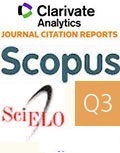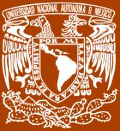Paleomagnetic study of the Chicxulub impact breccia sequence in the Santa Elena borehole —evidence of reverse polarity remanent magnetizations
Estudio paleomagnético de la secuencia de brechas de impacto de Chicxulub en el pozo Santa Elena—evidencia de magnetizaciones de polaridad reversa remanentes
Miriam Velasco-Villarreal1,*, Ligia Pérez-Cruz1,2,3, Jaime Urrutia-Fucugauchi1,2
1 Proyecto Universitario de Perforaciones en Océanos y Continentes, Instituto de Geofísica. Universidad Nacional Autónoma de México, Coyoacán 04510 México
2 Instituto de Investigación Científica y Estudios Avanzados Chicxulub, Parque Científico y Tecnológico de Yucatán, Sierra Papacal, Mérida, Yucatán 97302, México
3 Coordinación de Plataformas Oceanográficas, Coordinación de la Investigación Científica, Universidad Nacional Autónoma de México, Coyoacán 04510, México
Corresponding author: (M. Velasco-Villareal) This email address is being protected from spambots. You need JavaScript enabled to view it.
How to cite this article:
Velasco-Villarreal, M., Pérez-Cruz, L., UrrutiaFucugauchi, J., 2024, Paleomagnetic study of the Chicxulub impact breccia sequence in the Santa Elena borehole—evidence of reverse polarity remanent magnetizations: Boletín de la Sociedad Geológica Mexicana, 76 (3), A130224 http://dx.doi.org/10.18268/BSGM2024v76n3a130224
Manuscript received: October 19, 2023; corrected manuscript received: February 1, 2024; manuscript accepted: February 13, 2024.
ABSTRACT
Results of a paleomagnetic study of the Chicxulub breccias in the Santa Elena borehole are presented. The impact produced a deep excavation in the Yucatan platform, with fragmentation and deformation of the target lithologies. Fragmented material was ejected at high velocities and high temperatures, forming a central plume and lateral curtains. In the target zone, crustal rocks were melted forming a melt pool with breccias emplaced in the crater and proximal areas. Here we analyze the impact ejecta in a proximal location, south of the crater rim at 110 km away from the crater center at Chicxulub Puerto. The breccias in the Santa Elena borehole cored between 332 and 504 m depth are formed by melt, basement and carbonate clasts within carbonate-rich and melt-basement-rich matrix. The magnetic susceptibility, remanent magnetization and coercivity and unblocking temperature spectra provide constraints on the breccia emplacement. Thermal and alternating field demagnetization shows univectorial and two-component magnetizations with upward inclinations and only three samples with downward inclinations. Paleomagnetic studies of the impact breccias have shown mixed normal and reverse polarities, which have been interpreted in terms of reverse polarity characteristic magnetizations and hydrothermally induced overprints that vary with relative location. The upward paleomagnetic inclinations in the Santa Elena breccia section are consistent with reverse polarity magnetizations acquired during the ch29r chron.
Keywords: Chicxulub crater, impact breccias, paleomagnetism, magnetic polarity, emplacement mode, hydrothermal system.

